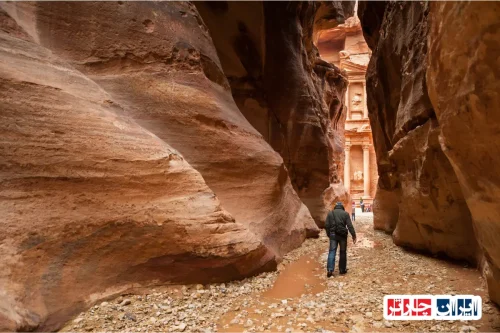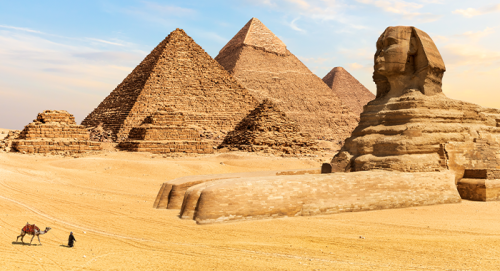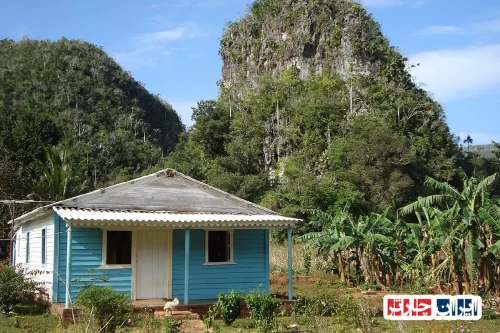Mutrah Souq Muscat Oman: Discover the Rich Heritage and Unique Shopping Experience in the Heart of Muscat
Mutrah Souq Muscat Oman is a vibrant and historic marketplace that offers visitors a captivating blend of traditional architecture, cultural heritage, and diverse local products. Located in the bustling city of Muscat, this souq is renowned for its lively atmosphere, authentic handicrafts, and the opportunity to immerse oneself in Omani culture. Walking through its narrow alleyways, travelers can explore a wide array of goods including jewelry, textiles, spices, and souvenirs, all while experiencing the warm hospitality of local vendors. The market’s unique ambiance is complemented by its stunning views of the sea and the surrounding mountains, making it a must-visit destination for anyone seeking an authentic taste of Oman’s rich history and vibrant trading traditions. Whether you are looking to buy traditional Omani silver jewelry or simply enjoy the lively environment, Mutrah Souq Muscat Oman provides an unforgettable shopping adventure that reflects the soul of Muscat’s cultural heritage.
Discover the Rich History and Secrets of Mutrah Souq Muscat Oman
Mutrah Souq in Muscat Oman is one of the oldest and most iconic markets in the region, boasting a history that spans over two centuries. This historic marketplace has served as a vital hub for trade, commerce, and cultural exchange, reflecting the rich heritage of Oman. Walking through its narrow alleyways, visitors can uncover stories of ancient merchants, traditional trading practices, and the evolution of commerce in the Gulf region. The souq’s deep-rooted history makes it a must-visit destination for those eager to connect with Oman’s past and explore its cultural treasures.
Over the years, Mutrah Souq has witnessed numerous transformations—from its original traditional structure to modern renovations that preserve its authenticity while enhancing visitor experience. The market has played a crucial role in shaping local economies, supporting small artisans, and maintaining age-old crafts. Its walls whisper tales of bygone eras, making it a living museum that offers insights into Oman’s economic resilience and cultural continuity. Exploring the souq provides a unique opportunity to delve into the secrets behind its enduring legacy and vibrant history.
Today, Mutrah Souq remains a lively center of activity, blending historical charm with contemporary vibrancy. Visitors can immerse themselves in the authentic atmosphere, discovering hidden stories behind each stall and artifact. The market continues to be a cultural landmark, symbolizing Oman’s enduring traditions and its journey through modern times. A visit to this historic marketplace offers not only shopping opportunities but also a chance to experience the captivating history that has shaped Muscat Oman into the enchanting city it is today.
Architectural Marvels and Unique Structure of Mutrah Souq Muscat Oman
The architecture of Mutrah Souq in Muscat Oman is a harmonious blend of traditional Omani design and subtle modern influences, creating a distinctive and captivating environment. Its narrow, winding alleyways are lined with wooden doors, lattice windows, and arched entrances that showcase authentic Omani craftsmanship. The market’s layout reflects centuries-old architectural principles, designed to maximize shade and airflow in the hot climate, while also fostering a sense of intimacy and discovery for visitors.
The structural elements, including intricately carved wooden beams, decorative lanterns, and traditional stone walls, highlight the region’s rich artisan heritage. The market’s roof structures often feature wooden trusses and woven palm fronds, providing natural cooling and adding to its rustic charm. These architectural details not only serve functional purposes but also tell stories of local building techniques passed down through generations. The unique structure of Mutrah Souq makes it a living example of Oman’s architectural ingenuity and cultural identity.
In recent renovations, efforts have been made to preserve these historic features while integrating modern amenities such as lighting and signage that enhance the shopping experience. The market’s design encourages exploration and discovery, with each corner revealing new sights, sounds, and scents. The architectural beauty of Mutrah Souq Oman is a testament to the craftsmanship and cultural pride of the Omani people, making it a must-see destination for architecture enthusiasts and history lovers alike.
Best Times and Seasons to Visit Mutrah Souq Muscat Oman
To fully enjoy the vibrant atmosphere of Mutrah Souq in Muscat Oman, planning your visit during the cooler months is highly recommended. The most pleasant time to explore the market is during autumn and winter, from October to February, when temperatures are milder and more comfortable for walking and shopping. During these months, the souq is lively yet manageable in terms of crowds, allowing visitors to browse and negotiate with vendors comfortably.
Special occasions such as Ramadan, Eid al-Fitr, and Eid al-Adha bring an added cultural flavor to the market, with festive decorations, traditional performances, and special offers. Visiting during these times offers a unique glimpse into Oman’s rich cultural celebrations and provides opportunities to purchase exclusive souvenirs. Additionally, early mornings or late afternoons are ideal for avoiding peak crowds and enjoying a more relaxed shopping experience amidst the authentic ambiance of the market.
Weekdays tend to be less crowded than weekends, making them perfect for those seeking a more intimate exploration of the market’s treasures. By choosing the right season and time of day, visitors can enhance their experience, capturing beautiful photos, engaging with local vendors, and discovering hidden gems within the historic walls of Mutrah Souq Oman.
Top Products and Must-Buy Items at Mutrah Souq Muscat Oman
Mutrah Souq in Muscat Oman offers an extensive array of authentic products that reflect the region’s rich cultural heritage. Visitors should not miss the opportunity to purchase traditional Omani jewelry, including silver and gold pieces adorned with intricate designs and semi-precious stones. Handwoven textiles, such as colorful carpets and embroidered fabrics, are also popular souvenirs that showcase local craftsmanship.
Traditional crafts like carved wooden items, brass and copperware, and aromatic spices are abundant within the market. The souq is renowned for its natural perfumes, frankincense, and myrrh, which are considered some of the finest in the region. These fragrant products make excellent gifts and authentic keepsakes of Oman’s ancient trading traditions. Additionally, leather goods, pottery, and handcrafted accessories are widely available, each telling a story of local artisans’ skills and creativity.
When shopping at Mutrah Souq Oman, bargaining is part of the experience. Engaging with vendors about prices and product stories not only ensures a fair deal but also enriches your cultural understanding. Be sure to explore every corner of the market to discover unique items that will serve as meaningful mementos of your journey and support local artisans in preserving their traditional crafts.
Unique Experiences and Cultural Highlights of Mutrah Souq Muscat Oman
Visiting Mutrah Souq in Muscat Oman is more than just shopping; it’s an immersive cultural experience. Wander through its labyrinth of alleys and discover artisans at work, creating handcrafted jewelry, textiles, and souvenirs. The lively atmosphere, filled with the aroma of spices and the sounds of bargaining, offers a glimpse into Oman’s vibrant trading culture.
Engage with local vendors and learn about the history and significance of their crafts, which have been passed down through generations. Many stalls display traditional Omani clothing, accessories, and artifacts that tell stories of the region’s history and social customs. Attending cultural performances or participating in traditional activities during festivals adds another layer of authenticity to your visit.
Moreover, the market’s proximity to the waterfront provides opportunities for scenic walks along the harbor, where you can admire the historic architecture and watch traditional dhows sail by. These experiences make Mutrah Souq Oman a destination that captures the essence of Oman’s rich cultural tapestry, offering memorable moments beyond shopping.
Essential Tips for Visiting Mutrah Souq Muscat Oman
To make the most of your visit to Mutrah Souq in Muscat Oman, plan ahead by arriving early in the morning or late in the afternoon when the market is less crowded. Wear comfortable clothing and footwear suitable for walking through narrow alleys and uneven surfaces. Carry cash in local currency, as some vendors may not accept cards, and always keep your valuables secure.
Respect local customs and traditions by dressing modestly, especially when exploring areas near religious sites or during special cultural events. Engage politely with vendors, practice bargaining with respect, and enjoy the process as part of the authentic experience. Don’t hesitate to ask about the history or stories behind products; locals often appreciate genuine interest and sharing their knowledge.
Finally, allocate enough time to explore the entire market thoroughly, allowing yourself to discover hidden corners and unique items. Be patient, enjoy the lively atmosphere, and take plenty of photos to preserve your memories of this historic and cultural gem in Muscat Oman.
Impact of Mutrah Souq on Muscat Oman’s Economy and Culture
Mutrah Souq plays a vital role in supporting the local economy by providing livelihoods for countless artisans, vendors, and small business owners. It acts as a hub for traditional crafts, spices, and souvenirs, contributing significantly to Oman’s tourism industry. The market’s popularity attracts visitors from around the world, boosting revenue and promoting cultural exchange.
Beyond economics, the souq is a cornerstone of Oman’s cultural identity. It preserves age-old traditions, crafts, and social customs that define the region’s heritage. The market’s vibrant atmosphere fosters community bonding and helps keep traditional practices alive amid modernization. Its role as a cultural ambassador makes it an essential part of Muscat’s social fabric.
By maintaining and promoting Mutrah Souq, Oman ensures that future generations can experience and learn from their rich history. The market’s influence extends beyond commerce, serving as a symbol of national pride and cultural resilience that continues to shape the identity of Muscat Oman today.
Explore Nearby Attractions and Scenic Routes around Mutrah Souq Muscat Oman
While visiting Mutrah Souq, take time to explore the surrounding attractions that enrich your experience. The nearby Mutrah Fort offers panoramic views of the harbor and insights into Oman’s defensive history. The Corniche promenade provides a scenic walkway along the waterfront, perfect for relaxing and enjoying the sea breeze.
Visit the Sultan Qaboos Grand Mosque, a stunning architectural masterpiece just a short drive away, to admire its intricate design and spiritual significance. For a taste of local life, stroll through the nearby fish market and watch traditional dhow boats docked at the harbor, adding to the authentic maritime atmosphere.
These scenic routes and cultural sites complement your visit to Mutrah Souq, creating a comprehensive experience of Muscat’s historic and natural beauty. Planning your route to include these attractions ensures a memorable journey through Oman’s rich cultural landscape.
Intriguing Stories and Legends of Mutrah Souq’s Past
Mutrah Souq has a storied past filled with legends and intriguing tales that add to its mystique. Historically, it was a bustling center for traders from across the Gulf, Persia, India, and Africa, making it a melting pot of cultures. Stories speak of legendary merchants, secret trading routes, and historic events that shaped the market’s identity.
One popular legend recounts how the souq was once a clandestine meeting place for traders exchanging rare spices, textiles, and jewelry. Others tell of hidden tunnels beneath the market, used during times of conflict or for smuggling valuable goods. These stories, passed down through generations, give the market an aura of mystery and adventure.
Exploring these tales enriches your understanding of the market’s significance and adds a layer of fascination to your visit. The history of Mutrah Souq is a testament to Oman’s resilience and its role as a crossroads of civilizations, making it a captivating destination for history enthusiasts and curious travelers alike.
How to Plan Your Perfect Visit to Mutrah Souq Muscat Oman
Effective planning can enhance your experience at Mutrah Souq in Muscat Oman. Start by choosing the best time—preferably early morning or late afternoon—to avoid crowds and enjoy cooler weather. Allocate enough time to explore the entire market, including side alleys and hidden corners.
Prepare by bringing cash in local currency, as some vendors may not accept cards. Dress modestly, respecting local customs, and wear comfortable shoes suitable for walking on uneven surfaces. Engage politely with vendors, practice bargaining, and show genuine interest in their crafts to enrich your experience.
Consider hiring a local guide or joining a cultural tour to gain deeper insights into the market’s history, architecture, and traditions. Capture photos of the vibrant scenes, and don’t rush—allow yourself to soak in the lively atmosphere and discover the authentic charm of Oman’s most famous souq. Proper preparation ensures a memorable and rewarding visit to this historic marketplace.
Frequently Asked Questions
- What is the historical significance of Mutrah Souq?
- Mutrah Souq is one of the oldest markets in Oman, with a history spanning over two centuries. It has served as a vital hub for trade, cultural exchange, and commerce, reflecting Oman’s rich heritage. The market has witnessed the evolution of trading practices and has been a center for local artisans and merchants, making it a living museum of Oman’s economic resilience and cultural traditions.
- What are the main architectural features of Mutrah Souq?
- The architecture combines traditional Omani design with subtle modern influences. Narrow, winding alleys are lined with wooden doors, lattice windows, and arched entrances showcasing authentic craftsmanship. Elements like carved wooden beams, decorative lanterns, and stone walls highlight Oman’s artisan heritage. The roof structures often feature wooden trusses and woven palm fronds, providing natural cooling and rustic charm.
- When is the best time to visit Mutrah Souq?
- The ideal time is during the cooler months from October to February, when temperatures are milder. Visiting early mornings or late afternoons helps avoid crowds and enjoy a more relaxed shopping experience. During festivals like Ramadan or Eid, the market is especially lively with cultural celebrations and special offers.
- What are must-buy items at Mutrah Souq?
- Popular souvenirs include traditional Omani jewelry, silver and gold pieces, handwoven textiles, aromatic spices, frankincense, and myrrh. Leather goods, pottery, and handcrafted accessories are also widely available. Bargaining is common, so engaging with vendors can lead to better deals and a richer cultural experience.
- What unique experiences does Mutrah Souq offer?
- Beyond shopping, visitors can watch artisans at work, learn about traditional crafts, and participate in cultural activities. The market’s proximity to the waterfront allows scenic walks along the harbor, with views of historic dhows and the architecture. Attending local performances or festivals adds to the immersive experience.
- How can I best plan my visit to Mutrah Souq?
- Plan to arrive early or late in the day to avoid crowds. Wear comfortable clothing and shoes suitable for walking through narrow alleys. Carry cash in local currency and respect local customs. Hiring a guide or joining a tour can provide deeper insights into the market’s history and culture.
- What role does Mutrah Souq play in Oman’s economy?
- The souq supports local artisans and small businesses, contributing significantly to tourism and the economy. It helps preserve traditional crafts and promotes cultural exchange, attracting visitors from around the world. The market is also a symbol of Oman’s cultural identity and resilience.
- What are nearby attractions to Mutrah Souq?
- Close attractions include Mutrah Fort, offering panoramic views of the harbor, and the Sultan Qaboos Grand Mosque, an architectural marvel. The Corniche promenade provides scenic walks along the waterfront, and the traditional fish market adds to the authentic maritime atmosphere.
- Are there any legends associated with Mutrah Souq?
- Legend has it that the souq was once a secret meeting place for traders exchanging rare spices and jewelry. Stories also speak of hidden tunnels beneath the market used during conflicts or for smuggling. These tales add a layer of mystique and fascination to its rich history.
- What tips should I follow for a successful visit?
- Arrive early or late to avoid crowds, wear modest and comfortable clothing, and carry cash. Engage politely with vendors, practice bargaining respectfully, and take time to explore all corners of the market. Capturing photos and asking about the history of products enriches the experience.
- How does Mutrah Souq influence Oman’s cultural preservation?
- The souq preserves age-old traditions, crafts, and social customs, serving as a cultural hub. It fosters community bonding and helps keep traditional practices alive amid modernization. Its vibrant atmosphere makes it a symbol of Oman’s cultural resilience and identity.
- What are the benefits of visiting Mutrah Souq?
- Visitors enjoy authentic shopping experiences, cultural insights, and scenic views. The market offers unique souvenirs, opportunities to learn about Oman’s history, and a chance to connect with local artisans. It’s a memorable destination that combines tradition with vibrant local life.
- Can I participate in cultural events at Mutrah Souq?
- Yes, during festivals like Ramadan and Eid, cultural performances and traditional activities take place. Participating in these events provides a deeper understanding of Oman’s customs and enhances your overall experience.
- What should I keep in mind regarding local customs?
- Dress modestly, especially near religious sites. Be respectful when bargaining and engaging with vendors. Show genuine interest in crafts and stories, and always ask permission before photographing people or products.






















